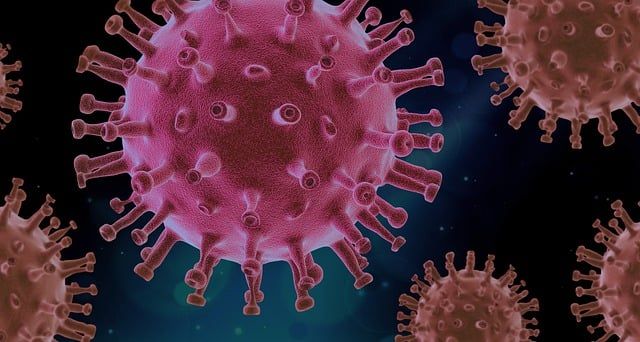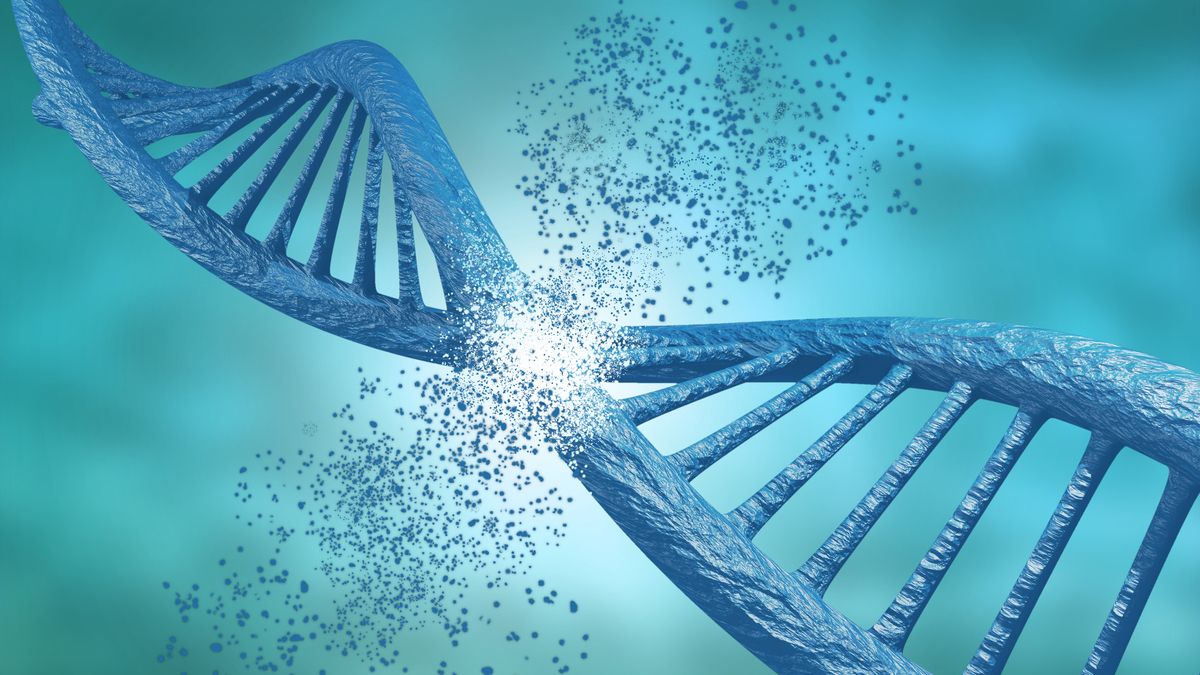Understanding the Treatment Protocol for Long Covid: A Comprehensive Guide
Long Covid is a condition that has emerged as a prolonged consequence of the Covid-19 infection. As the name suggests, it refers to the persistence of symptoms beyond the acute phase of the illness. Understanding and managing this condition is crucial for healthcare providers and patients alike. This comprehensive guide aims to provide insights into the treatment protocol for Long Covid, including defining the condition, recognizing symptoms, medical approaches, rehabilitation, mental health considerations, and lifestyle adjustments.
Long Covid: COVID-19 treatment and recovery
Defining Long Covid: Symptoms and Duration
Long Covid refers to the long-lasting symptoms experienced by individuals who have previously contracted Covid-19. While most people recover from the acute illness within a few weeks, some individuals continue to experience persistent symptoms for several months. It is important to note that the duration and severity of Long Covid can vary greatly among individuals.
Long Covid is a complex condition that can profoundly impact individuals’ lives. It is not simply a continuation of the acute illness but rather a distinct and ongoing health challenge. The symptoms of Long Covid can be debilitating and can significantly affect daily functioning and overall well-being.
The Prolonged Impact of Covid-19
“Patients will say, ‘I can’t find my words. I lose track of my thoughts in the middle of my sentences. I have to write everything down. I can’t multitask anymore,’”
Dr. McAlpine, Neurologist
Long Covid can significantly impact individuals’ daily lives and overall well-being. Common symptoms can include persistent fatigue, shortness of breath, muscle aches, brain fog, and mood disturbances.
One of the most challenging aspects of Long Covid is the persistent fatigue that individuals experience. This fatigue can be overwhelming and can make even simple tasks feel exhausting. It can affect work, relationships, and overall quality of life.
Shortness of breath is another common symptom of Long Covid. Individuals may find it difficult to catch their breath even with minimal exertion. This can limit physical activity and can lead to feelings of frustration and anxiety.
Muscle aches and pains are also frequently reported by individuals with Long Covid. These can range from mild discomfort to severe pain and can affect different parts of the body. This can make engaging in physical activities difficult and impact overall mobility.
Brain fog, or cognitive difficulties, is another symptom that individuals with Long Covid often experience. This can manifest as difficulty concentrating, memory problems, and a general feeling of mental fog. It can make it challenging to perform tasks that require focus and can impact work and daily functioning.
Mood disturbances, such as anxiety and depression, are also common in individuals with Long Covid. The ongoing nature of the condition, along with the physical symptoms, can take a toll on mental health. Individuals with long-term Covid need to seek support and treatment for these psychological symptoms.
Recognizing the Symptoms of Long Covid
Identifying Long Covid symptoms is crucial for timely diagnosis and proper management. These symptoms can affect multiple body systems, including respiratory, cardiovascular, neurological, and psychological functions. Some individuals may experience a combination of these symptoms, while others may exhibit only a few. Consulting a healthcare professional is essential for accurate diagnosis.
Respiratory symptoms of Long Covid can include persistent cough, chest tightness, and difficulty breathing. These symptoms can be similar to those experienced during the acute phase of COVID-19, but they persist beyond the initial infection.
Cardiovascular symptoms, such as heart palpitations and chest pain, can also be present in individuals with Long Covid. These symptoms can be concerning and may require further evaluation and management by a healthcare professional.
Neurological symptoms, including headaches, dizziness, and tingling sensations, are also reported by individuals with Long Covid. These symptoms can be disruptive and can impact daily functioning and quality of life.
Psychological symptoms, such as anxiety, depression, and mood swings, are common in individuals with Long Covid. The ongoing nature of the condition, along with the physical symptoms, can contribute to these psychological challenges.
It is important for individuals experiencing symptoms that persist beyond the acute phase of COVID-19 to seek medical attention. A healthcare professional can conduct a thorough evaluation, including a detailed medical history and physical examination, to determine if Long Covid is the underlying cause of the symptoms.
Managing Long Covid requires a multidisciplinary approach, with healthcare professionals from various specialties working together to address the different aspects of the condition. Treatment may include a combination of medications, physical therapy, cognitive rehabilitation, and psychological support.
Research is ongoing to better understand Long Covid and develop effective treatments. It is important for individuals with Long Covid to stay informed about the latest research and treatment options and to advocate for their health and well-being.
ALT TXT IMG: Covid Virus
The Medical Approach to Long Covid
The medical management of Long Covid primarily involves diagnostic procedures and treatment strategies aimed at alleviating symptoms and improving overall well-being. Long Covid, also known as post-acute sequelae of SARS-CoV-2 infection (PASC), is a condition that affects individuals who have recovered from the acute phase of COVID-19 but continue to experience persistent symptoms for weeks or even months. It is a complex and multifaceted condition requiring a comprehensive diagnosis and treatment approach.
Diagnostic Procedures for Long Covid
To evaluate and diagnose Long Covid, healthcare professionals may employ various diagnostic procedures. These can include medical history assessments, physical examinations, laboratory tests, imaging studies, and cardiopulmonary evaluations. These diagnostic tools help rule out other potential causes and provide a comprehensive understanding of the individual’s condition.
Medical history assessments play a crucial role in identifying the onset and progression of symptoms, as well as any pre-existing conditions that may contribute to the development of Long Covid. Physical examinations allow healthcare providers to assess the individual’s overall health status, including any signs of organ dysfunction or physical limitations.
Laboratory tests, such as blood tests and viral load assessments, help identify any ongoing viral activity or potential complications. Imaging studies, such as chest X-rays or CT scans, can provide valuable insights into the condition of the lungs and other affected organs. Cardiopulmonary evaluations, including pulmonary function tests and echocardiograms, help assess the respiratory and cardiovascular systems’ functionality.
Current Treatment Strategies
While Long Covid has no specific cure, various treatment strategies can help manage and alleviate symptoms. These may include tailored medications, such as pain relievers, anti-inflammatory drugs, and medications to address specific symptoms like shortness of breath or sleep disturbances. Additionally, healthcare providers may recommend a multidisciplinary approach involving rehabilitation, mental health support, and nutritional adjustments.
Medications play a crucial role in symptom management and may be prescribed based on the individual’s specific symptoms and medical history. Pain relievers, such as nonsteroidal anti-inflammatory drugs (NSAIDs), can help alleviate headaches, muscle aches, and joint pain commonly experienced in Long Covid. Anti-inflammatory drugs, such as corticosteroids, may be used to reduce inflammation in the lungs and other affected organs. Medications targeting specific symptoms, such as bronchodilators for respiratory issues or sleep aids for sleep disturbances, can provide much-needed relief.
However, treatment for Long Covid extends beyond medication. A multidisciplinary approach involving rehabilitation can help individuals regain their physical strength and functionality. Physical therapy, occupational therapy, and respiratory therapy may be recommended to address muscle weakness, fatigue, and breathing difficulties. Mental health support, including counseling or therapy, can assist individuals in coping with the emotional and psychological impact of Long Covid. Nutritional adjustments, such as dietary modifications and NAD supplementation, may also support overall well-being and immune function.
In conclusion, the medical approach to Long Covid involves a comprehensive range of diagnostic procedures and treatment strategies aimed at understanding and managing the condition’s complex nature. By combining medical assessments, tailored medications, rehabilitation, mental health support, and nutritional adjustments, healthcare professionals strive to improve the quality of life for individuals experiencing Long Covid.
The Role of Rehabilitation in Long Covid Recovery
Rehabilitation plays a vital role in the recovery process for individuals with Long Covid. Physical therapy and occupational therapy can help address physical limitations, improve functional abilities, and enhance overall quality of life.
Long Covid, also known as post-acute sequelae of SARS-CoV-2 infection (PASC), is a condition where individuals experience persistent symptoms and complications after recovering from the initial acute phase of COVID-19. These symptoms can include fatigue, shortness of breath, muscle weakness, cognitive difficulties, and joint pain. Rehabilitation programs are designed to address these specific challenges and help individuals regain their strength and independence.
Physical Therapy and Long Covid
Physical therapy aims to optimize physical function and independence. Therapists may implement individualized exercise programs, breathing techniques, and energy conservation strategies to manage fatigue and improve endurance. These exercises can include a combination of cardiovascular training, strength training, and flexibility exercises to target specific areas of weakness or dysfunction.
In addition to exercise, physical therapists may also utilize modalities such as heat or cold therapy, electrical stimulation, and manual therapy techniques to reduce pain and improve tissue healing. They may also provide education on proper body mechanics and postural alignment to prevent further strain or injury.
Occupational Therapy for Daily Functioning
Occupational therapists provide guidance and support to individuals with Long Covid in managing daily activities. Strategies can range from energy conservation techniques to ergonomic interventions and assistive devices. These interventions aim to promote independence and enhance the individual’s ability to perform meaningful activities.
For example, an occupational therapist may work with a Long Covid patient to develop a routine that balances rest and activity, ensuring they are not overexerting themselves. They may also provide recommendations for modifications to the home or workplace environment to reduce physical strain and improve accessibility.
In addition, occupational therapists can help individuals with cognitive difficulties by providing strategies to improve memory, attention, and problem-solving skills. This may include techniques such as breaking tasks into smaller steps, using visual aids or reminders, and practicing mindfulness or relaxation exercises to reduce stress and improve focus.
Overall, rehabilitation plays a crucial role in the recovery journey of individuals with long-term Covid. By addressing physical limitations and providing strategies to manage daily activities, physical therapy, and occupational therapy can help individuals regain their independence, improve their quality of life, and facilitate a successful return to their pre-Covid routines.
Mental Health Considerations in Long Covid
The psychological impact of Long Covid is an important aspect of managing the condition. The prolonged nature of the illness, coupled with the uncertainty and potential impact on daily life, can lead to anxiety, depression, and other mental health challenges.
Psychological Impact of Long Covid
Individuals with Long Covid may experience psychological symptoms such as anxiety, depression, and post-traumatic stress disorder (PTSD). It is crucial to address these mental health challenges alongside physical symptoms for comprehensive care.
Therapeutic Interventions for Mental Health
Therapeutic interventions, including cognitive-behavioral therapy (CBT) and counseling, can be beneficial in managing the mental health impact of Long Covid. These interventions aim to provide coping strategies, promote resilience, and improve overall psychological well-being.
Nutritional and Lifestyle Adjustments for Long Covid Patients
In addition to medical and rehabilitation approaches, nutritional and lifestyle adjustments can play a significant role in supporting Long Covid recovery.
Dietary Changes to Support Recovery
A balanced and nutrient-rich diet can help individuals with Long Covid maintain optimal health and support their immune system. Prioritizing whole foods, such as fruits, vegetables, lean proteins, and whole grains, while minimizing processed foods and sugary beverages is recommended. Consulting a registered dietitian can provide individuals with personalized dietary recommendations.
Importance of Sleep and Rest in Healing
Sleep and rest are essential components of the healing process for individuals with Long Covid. Adequate rest and quality sleep facilitate recovery and support overall physical and mental well-being. Establishing a consistent sleep routine, creating a sleep-conducive environment, and practicing relaxation techniques can aid in improving sleep quality.
Conclusion
In conclusion, understanding the treatment protocol for Long Covid is crucial in providing comprehensive care to individuals experiencing this condition. With its varied symptoms and impact on everyday life, a multidisciplinary approach that includes medical management, rehabilitation, mental health support, and lifestyle adjustments is essential. By addressing the physical, psychological, and social aspects of Long Covid, healthcare professionals can help individuals effectively manage their symptoms and improve their overall well-being. With Accuri® Vitality ↑® NAD+ Booster, you can improve sleep quality, reduce pain, and improve mental clarity. Place your order today.
Lastly, if you’re interested in going deeper on health-related content, here are a few of our recent posts that you may want to read:
- Why Optimized, Precision Medicine is the Future
- Andrew Huberman is Wrong About NAD, NAD+ precursor & Longevity
- 9 Powerful Benefits of Optimizing Your NAD
- What Does Peak Performance Look Like?
P.S. Want to boost your intracellular NAD levels? Try a 2 week trial of our Jinfiniti Vitality ↑® NAD+ Booster (do 2 scoops per day), use the discount code Blog15 if you’re a new customer for 15% off your 1st order)
Boost your NAD levels to optimize your health and longevity. Get an exclusive 20% OFF today by using code Blog20. Click here to order.


























